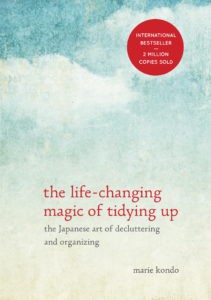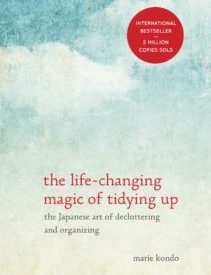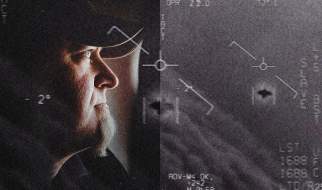?It?s not about what to discard, it?s what to keep.?

Rating: 7/10
Read more on Amazon
Get the full index of lessons here
Short Summary
The Life-Changing Magic Of Tidying Up is much more than a book about cleaning, simplifying and organizing your belongings. It?s also about being intentional with what you choose to own and how that impacts your way of living, thinking, and perspective on life. It?s quite short, I read it in a couple of hours in one go.
Lessons
The book deconstructs the KonMari Method, which helps you escape the vicious cycle of clutter. Concentrate your efforts on eliminating clutter thoroughly within a short span of time and you?ll see instant results that will keep you empowered to keep your space in order ever after.
?The question of what you want to own is actually the question of how you want to live your life.?
There are two types of tidying: ?daily tidying? and ?special event tidying?. The first refers to using something and then putting it back in its place. It will always be a part of your day-to-day life and as long as we need things. However, the purpose of the book in to help you in the latter, putting your house in order once and for all. It focuses on the system itself.
Tidying must start with discarding, throwing away or donating anything we don?t need or use anymore. Kondo repeatedly uses a simple question at the center of the tidying process:
?Does this item spark joy??
What sparks joy for one person might be different for another. This particular prompt helps to assess when it?s time for an item to go.
Effective tidying involves only two essential actions: discarding and deciding where to store things. Of the two, discarding must come first. This principle does not change. In her words:
?Putting things away creates the illusion that the clutter problem has been solved. But sooner or later, all the storage units are full, the room once again overflows with things, and some new and ?easy? storage method becomes necessary, creating a negative spiral. This is why tidying must start with discarding. We need to exercise self-control and resist storing our belongings until we have finished identifying what we really want and need to keep.?
If you start wondering where to put things in the middle of the discarding this work will come to a halt. You can think about where to put things when you?ve finished getting rid of everything you don?t need.
The rest depends on the level of tidiness you personally want to achieve.
Getting Started
There are 3 lessons you need to keep in mind:
- Move from easy to hard items when considering what to keep
The author recommends that you declutter in the following order: clothes, books, papers, ?komono? (miscellaneous), and finally end with mementos (things with sentimental value). This order will make cleaning a breeze since you work through the easy things first ? gradually improving your decision-making skills -, so that when you reach the hard stuff it will be simpler and less stressful.
- YODO ? you only declutter once (if you do it right)
If you follow this method, a weekend is more than enough time to clean a house. After you cleaned it thoroughly, you?ll notice how much space you have and emerge with a new mindset. The first cleaning can have a deep impact on your life: you will probably buy a lot less in the future and be more protective of your space, making future cleanings simple and easy.
- Ask yourself a few simple questions for each item
Kondo suggests a few simple questions, which you can use, moving from a rational to a more emotional approach, depending on the item and the complexity of the relationship you have with it: What is the purpose of this object? Has it fulfilled its purpose already? Why did I get this thing? When did I get it? How did it land in my house?
Discarding
Do not even think of storing your things until you have finished the process of discarding. This is the single biggest mistake people make.
Think in terms of category, collecting everything that falls into the same category at one time. For example: if you want to tidy your clothes, gather every single item of clothing in one place at the same time. Search every room of the house and collect all clothing items.
Then pick up one by one see if it sparks joy. If it doesn?t, think of the lesson that the object taught you while you owned it. For example, the sweater you bought that was on sale but wasn?t quite your color, taught you what was not your style. The sweater has served its purpose. It should be thanked for its service and be sent on its way to serve a purpose for someone else.
Follow this procedure for every category. If you have too many clothes, you can make subcategories such as tops, bottoms, socks, and so on, and examine your clothes, one subcategory at a time.
(Side note for a funny story (I mean funny now, not so great then): I slipped on a piece of plastic and broke my scaphoid doing this, undergoing surgery a month later to put a screw in. True story! Beware: cleaning clothes can be dangerous! ;))
As you go through the order, break each category down into subcategories to make it less overwhelming and to focus better. Remember: it?s not about what to discard, it?s what to keep. Default to discard unless something truly brings you joy.
Discard all papers that are not in these three categories: currently in use, needed for a limited period of time, or must be kept indefinitely. Papers never spark joy.
For things with sentimental value, Kondo argues that many of those should still be thrown away, but to take care of the process of getting rid of it:
?By handling each sentimental item and deciding what to discard, you process your past? It is not our memories but the person we have become because of those past experiences that we should treasure. This is the lesson these keepsakes teach us when we sort them. The space in which we live should be for the person we are becoming now, not for the person we were in the past.?
For example, gift cards are nice messages from friends and loved ones, bringing you joy and happiness. But even though you keep them around, you probably never look at them again. You?ve received the message, and therefore you can now let them go. The item has served its purpose.
Placing
Designate a spot for everything. This is a lot easier than it sounds.
Once you learn to choose your belongings properly, you will be left only with the amount that fits perfectly in the space you currently own. This is the true magic of tidying.
?The first step is to visualize what the inside of your drawer will look like when you finish. The goal should be to organize the contents so that you can see where every item is at a glance, just as you can see the spines of the books on your bookshelves. The key is to store things standing up rather than laid flat. Some people mimic store displays, folding each piece of clothing into a large square and then arranging them one on top of the other in layers. This is great for temporary sales displays in stores, but not what we should be aiming for at home, where our relationship with these clothes is long term.?
Go for ?ultimate simplicity? in your storage efforts: store all items of the same type in the same place and don?t scatter storage space. Clutter is caused by a failure to return things to where they belong. Therefore, storage should reduce the effort needed to put things away, not the effort needed to get them out.
I quite enjoyed her method of organizing clothes and have used it ever since. Here?s a video of her explaining the folding technique she uses:
Store things vertically. Avoid stacking as you end up with inexhaustible storage space and things can stack forever and endlessly on top, making it harder to notice the increasing volume.
Furthermore, stacking is very hard on the things at the bottom. They tend to get squished.
Kondo?s vertical folding technique makes it easy to spot everything and maintain the clothes organized (as you are not taking and putting back a bit pile of clothes). If needed, use shoeboxes as drawer dividers: a smaller box is perfect for square scarves, a deep one can go in a bottom drawer for sweaters.
How Tidying Affects Your Life
Discarding anything that doesn?t spark joy means that we only keep what we truly love. Following the KonMari method, we rediscover what those things are and surround ourselves only with the things we love.
Learning how to let go and what to keep is a matter of how you want to live your life.
We attach to things because of past and emotional bonds. We hold to other areas of our life for the same reasons and using the KonMari it becomes far easier once you know that things will still work out even if you are lacking something
When you detox your belongings, you detox your body and mind. This will help you simplify other areas of your life, such as career, money, and relationships.
Surround yourself with things that spark joy and you will become happy.


